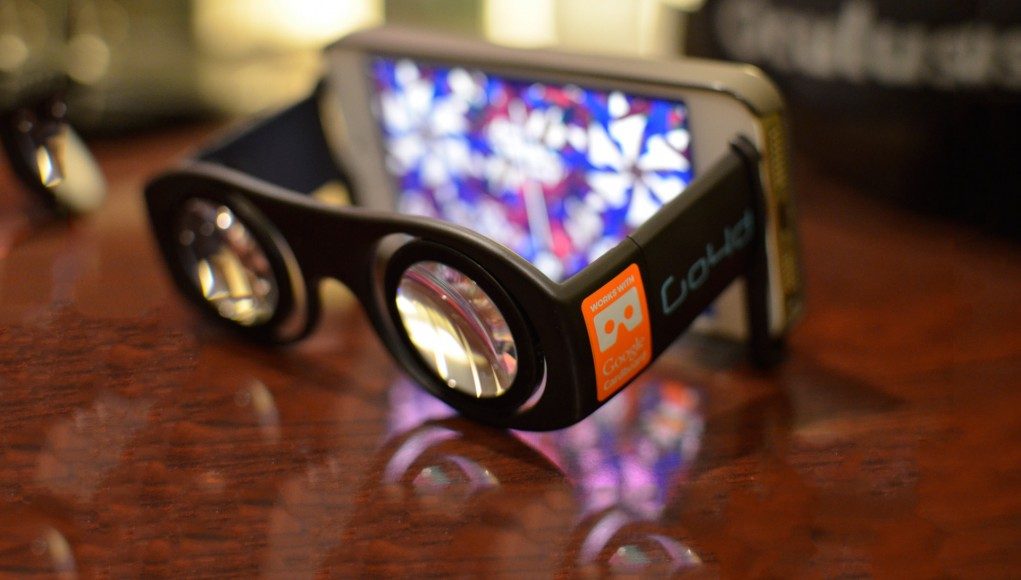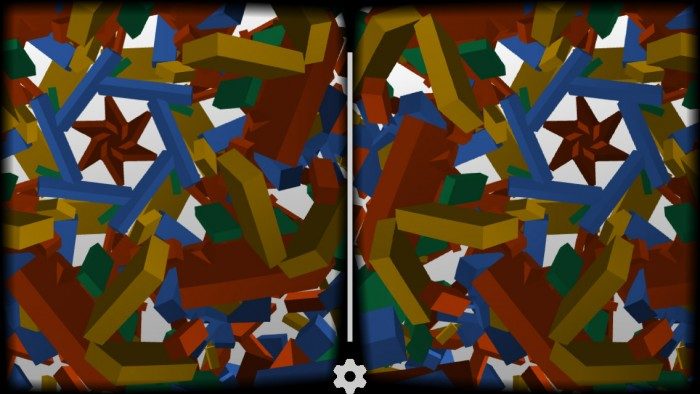Ready or not, Apple, here comes virtual reality on the iPhone courtesy of Google. The search giant has now released the official Cardboard app for iOS with a few brand new demos. What’s more, the Cardboard SDK is compatible with iOS as well, opening the gates for Google’s vision of VR on its competitor’s platform. This virtual invasion may put pressure on Apple’s VR plans.
The Google Cardboard iOS app is now live. The app is functionally similar to its Android counterpart, though it contains a new set of demos.
The Explorer demo cycles through 360 degree photos of exhibits from various museums. Dinosaurs, planes, and space shuttles can be seen. Tap to switch from one scene to the next.

Urban Hike takes viewers on a Street View-like journey through cities around the world. If you look at your feet you’ll see text that says the current location and prompts for a click to move to the next location.
The Kaleidoscope demo is a trippy real time CG visualization that starts with a Google logo that explodes into hundreds of pieces when you tap the screen. The pieces, which are colored after Google’s classic logo colors, swirl around in patterns which react based on where you look.
The Exhibits demo and Tutorial are both present as well, but also previously seen on the Cardboard app for Android.
I was delightfully surprised to find that the magnetic ring input from Google’s original Cardboard viewer actually worked with the iOS app. I wasn’t even aware that Apple allowed developers to make use of the magnetometer at that level.
See Also: Google Announces New, Larger Cardboard VR Viewer with Universal Input Button
The Cardboard app for iOS, though it only has 19 ratings at the time of writing, is already performing well with a 4.5 out of 5 average score, very close to the app’s 4.2 rating on Android (across more than 30,000 reviews!).
The Cardboard app for iOS also supports Google’s ‘Works with Google Cardboard’ program which seamlessly grabs lens characteristic info from a QR code on compatible VR viewers, automatically adapting apps built with the Cardboard SDK for the given lenses.
Speaking of the SDK—Google has announced that their Cardboard SDK on Unity now supports iOS in addition to Android. This should make it easy for a bulk of developers to deploy VR experiences cross-platform between the two leading mobile operating systems.
And frankly, it could mean that Apple will end up with hundreds of VR apps in their App Store, as has already happened with Android. This could put pressure on Apple to either find a way to block the invasion of Google’s Android VR into iOS, or to roll out their own offering before they cede too much market share.









